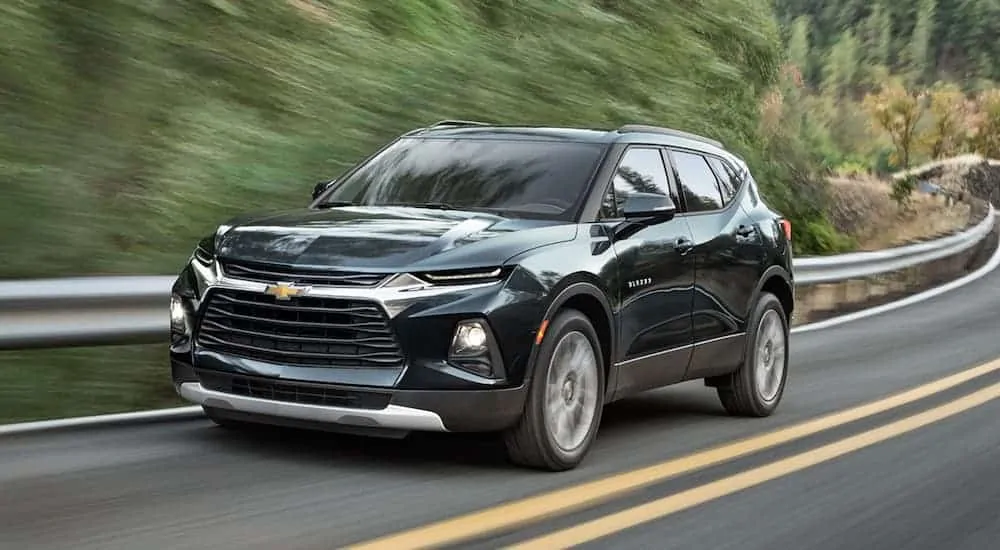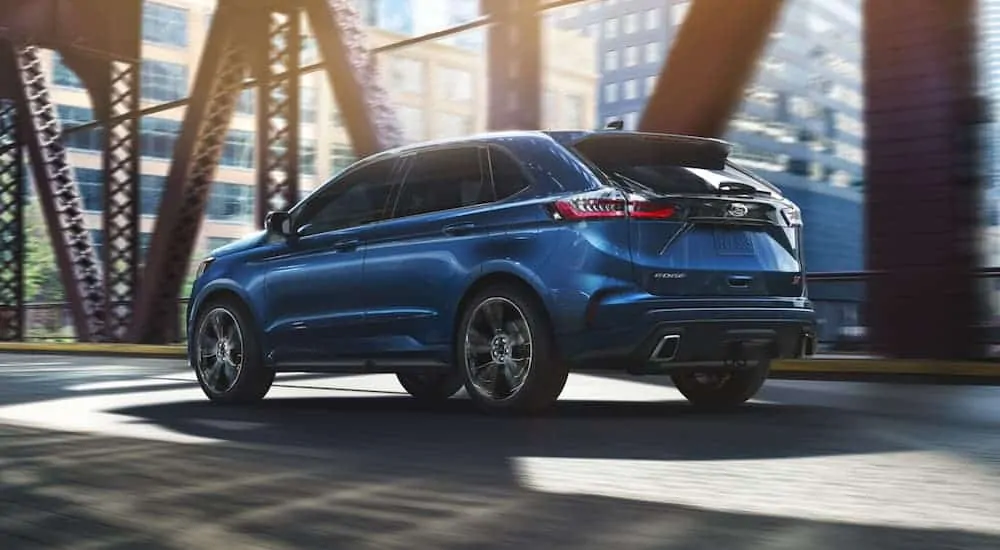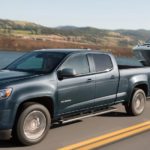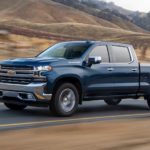In the market for a midsize crossover SUV? Well, you are in luck because the market is bursting with options, and manufacturers seem to keep upping the ante for tech and driver-assisted safety features to woo buyers. In the midst of so many different types of SUVs, perhaps it might be interesting to take a look at two of the most popular SUVs to see how they stand up to one another. So with that in mind, let’s take a look at this comparison: 2020 Ford Edge vs 2020 Chevy Blazer. From the outside, these two vehicles may seem very similar, but looking at the nitty-gritty details brings one competitor higher on the totem pole. So, which one ends up higher? Let’s find out.
How Do the Engines Compare?
The first place to compare the two SUVs is by looking under their hoods – at their engines. The Edge offers two engines, while the Blazer offers three. However, the Edge only offers two because the performance is great enough that two is plenty.
The standard engine on the Ford Edge is a 2.0L EcoBoost engine with 250 hp and 280 lb-ft of torque. The Chevy Blazer’s standard engine looks limp in comparison as it is a 2.5L 4-cylinder engine with only 193 hp and 188 lb-ft of torque. So already, the Ford Edge has a step up with the standard engine comparison. But, both vehicles allow for engine upgrades, including the Blazer’s 2.0L Turbo 4-cylinder with 230 hp and 258 lb-ft of torque. This upgraded engine for the Blazer still does not even compare to the power offered in the standard engine of the Ford Edge. But let’s take a look at the top engine offerings for each vehicle.
The Edge comes in with an upgraded 2.7L EcoBoost engine that offers 335 hp and an impressive 380 lb-ft of torque. And the Blazer’s top engine is a 3.6L V6 engine with 308 hp and 270 lb-ft of torque. Again, absolutely no comparison. The Edge is overwhelmingly more powerful. It is hard to argue the fact that the engine power is one of the most significant factors during a comparison, so this is putting the Edge ahead right at the beginning.

How Do They Look?
Differences between the exterior appearances of the Ford and the Chevy may just come down to personal preference. The two SUVs are quite similar in appearance, with few differences both standard and through upgrades. The differences become more evident when we look at the sport editions, so we are going to look at how those, the Edge ST and the Blazer RS, compare.
The Edge ST comes standard with LED headlights, taillights, and fog lights, with the headlights being activated by the wipers. Body color fascia, mirror caps, lower cladding, door handles, and spoiler add to the sport factor. Polished stainless steel dual exhaust tips integrated into the rear design also add to the sportiness, with the added plus of tinted rear windows. Other desirable features like heated exterior mirrors, an acoustic laminate windshield and side windows to cut down on exterior noise, a hands-free liftgate, and rain-sensing wipers all add to the convenience and comfort of the Edge.
Chevy’s Blazer RS comes standard with LED daytime running lights and taillights, but the headlights are only optional, with high-intensity being standard. Fog lights are not optional at all. Body color mirror caps, antennae, and door handles are standard, with dual polished exhaust tips that are integrated. Tinted rear windows, heated auto-dimming exterior mirrors, and a hands-free liftgate all come standard for the RS. Ford offers a few more extras here, but the overall look definitely comes down to personal preference.
A Look to the Inside
If you seat yourself in the command center of the Ford Edge, it will remember you as you fold yourself into the leather-trimmed, silver-stitched driver’s seat. With ten-way powered and heated front seats, you have comfort right from the start. The option of ventilated front seats and heated back seats are also available. A leather-wrapped steering wheel is powered for tilting and telescoping and has the controls to cruise, audio functions, and voice commands mounted there. The memory feature applies to the exterior mirrors as well, the rear-view mirror is auto-dimming, and the Edge has intelligent access with push-button and remote start.
Getting behind the wheel of the Chevy Blazer means you get leather-trimmed perforated seats behind a leather-wrapped steering wheel studded with the same mounted controls as the Ford. Sadly, the steering wheel is not automatic for tilting or telescoping, and the driver’s seat will not remember you with its eight-way powered options. The front seats are heated, with the possibility of adding heated seats to the back, and the rear-view mirror is also auto-dimming. Chevy gives the Blazer RS remote start and keyless entry as well, with active noise canceling making up for the lack of acoustic windows.
But what about space? Well, even though the Blazer may look larger from the outside, the interior of the Edge actually offers more space. The Blazer provides up to 64.2 cu.ft. of cargo space, while the Edge has a significant 73.4 cu.ft. to offer. So if you need more room for your belongings, the Edge is the way to go.
Infotainment
Ford offers its Sync 3 system with FordPass Connect as standard on the Edge. With the Bang and Olufsen audio system and the touchscreen that allows pinch-to-zoom and swiping, this is a nifty bit of tech to enjoy. The FordPass Connect comes with 4G WiFi that allows up to ten devices at once and up to 50 feet of connectivity outside of the vehicle. Two smart-charging USB ports and a 110-volt plug, plug four 12-volt power points will mean everyone can keep their devices charged and streaming while you drive.
The Sync 3 system incorporates hands-free, voice-activated controls, and has Apple CarPlay, Android Auto, and Alexa with Bluetooth capability and a SiriusXM trial. All these features can be accessed via compatible smartphones to stream while driving or check features of your vehicle from your phone from anywhere. Both Ford and Chevy include an eight-inch touchscreen in the dash.
Chevy also has its own integrated infotainment system called Chevrolet Infotainment 3, which incorporates hands-free, voice-activated controls, Apple CarPlay, Android Auto, Bluetooth, and Cloud5 to help remember infotainment and vehicle settings. This system also has a navigation system and in-vehicle apps. Along with this system, Chevy has a six-speaker audio system, 4G WiFi, two charging ports, a 120-volt outlet, two USB ports, and an auxiliary jack for streaming. Sadly, the Bose premium audio system is only optional, not standard.
Okay… But Which is Better?
In many ways, both of these vehicles are impressively tricked out with tech and features to make a driving experience fun and comfortable. With much better performance specs, more tech features on the infotainment, slightly more space inside, and the exterior extras in LED lighting and other features, the Ford Edge comes out with an edge over the Chevy Blazer. While some of the features come down to preference, it is too hard to ignore the significant difference in performance. So with all of that said, the Edge is the winner of this comparison.





